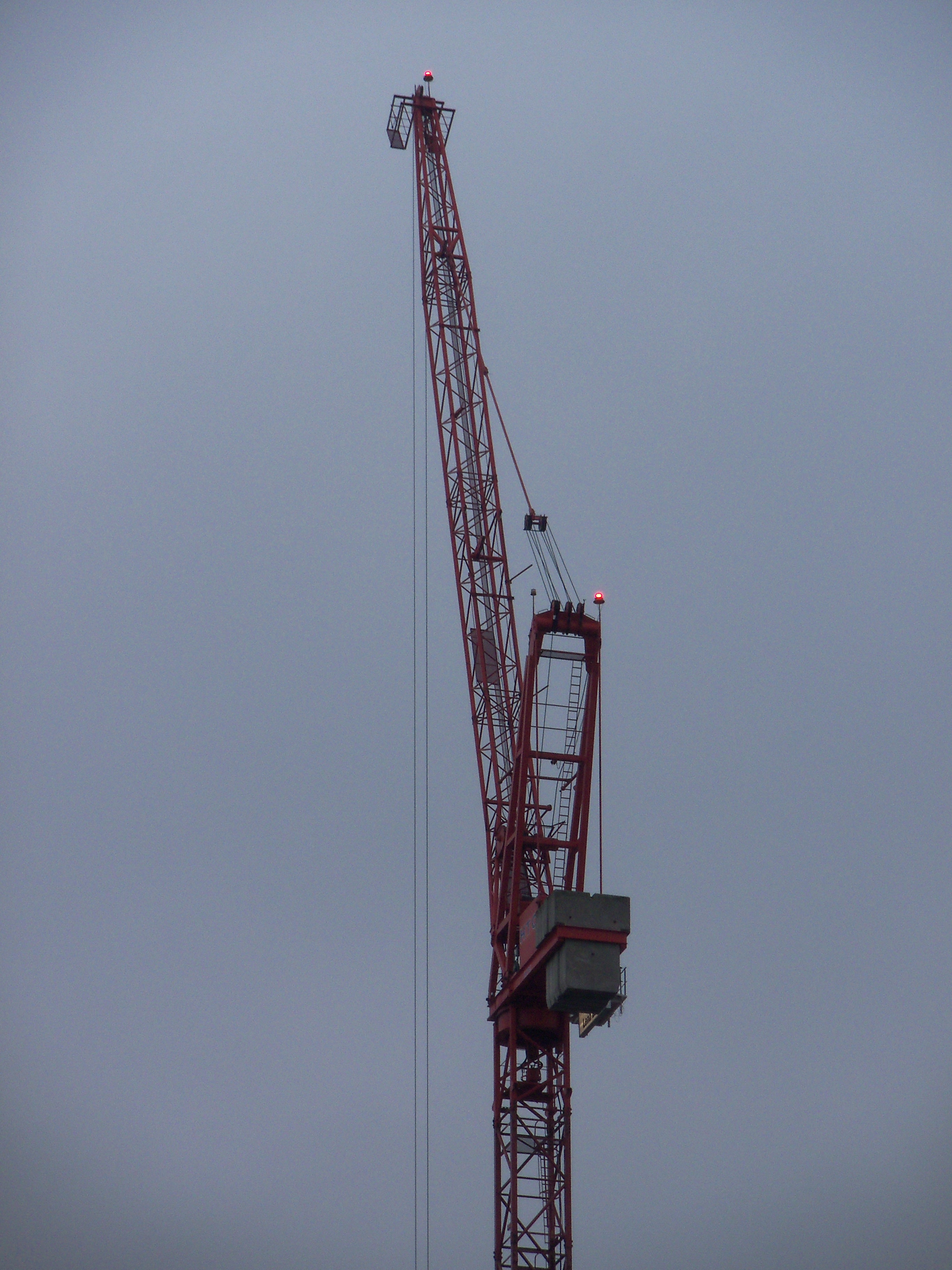Crane regulations
Contents |
[edit] Introduction
Cranes are a very common feature on construction projects. All lifting operations should be planned carefully so they are carried out safely having assessed all the risks, and there are a number of regulations and safety guidelines that must be adhered to.
The two principal hazards associated with cranes are the collapse of the crane and loads falling from height, both of which present significant potential for injury, fatalities and damage, both on and off-site.
In April 2013, following a public consultation, the Notification of Conventional Tower Crane Regulations 2010 were revoked, meaning that there is now no longer a duty to notify tower cranes on construction sites to the HSE.
Nonetheless, it is still a legal requirement that all operations involving lifting equipment must be properly planned by a competent person, appropriately supervised, and carried out in a safe manner. Crane operators, and those directing lifting operations, must be trained and competent. Cranes must be of adequate strength, tested at prescribed intervals, and subject to the required examinations and inspections as laid out in BS 7121:1:2006 Code of practice for safe use of cranes.
In addition, the Lifting Operations and Lifting Equipment Regulations 1998 (LOLER) place duties on people and companies who own, operate or have control over lifting equipment.
[edit] CPA contract
Crane hire companies adhere to the terms and conditions of the Construction Plant Hire Association (CPA) and in accordance with BS 7121 The Safe Use of Cranes.
Under the terms of a standard CPA crane hire contract, the client hires the crane and operator. The client takes full responsibility for the execution of the lifting operation as well as the crane once it is brought onto the site. The client must have an Appointed Person who is made responsible for the lift and provide adequate insurance cover. If the client doesn’t have the necessary insurances, the company usually increases the hire charge.
[edit] CPA Contract Lift
Clients who are inexperienced in hiring cranes and so do not have the necessary competencies for safe planning and use are able to make use of a CPA Contract Lift service. This means that the crane owner provides insurance cover and retains responsibility for the crane and other equipment, the operator and all other personnel supplied with the crane, as well as all aspects of the lift plan and execution.
It is important to note that a Contract Lift is only valid when the crane owner supplies the Appointed Person to supervise. The client retains certain liabilities and should hold insurance to protect against such things as their own negligence, poor ground conditions, or the supply of incorrect information regarding the lift.
[edit] Wind
According to LOLER, appropriate devices should be made available to detect dangerous situations and allow for effective mitigation in conditions of high wind that may threaten a crane and/or its load. The information regarding the maximum wind speed in which the crane can be safely operated should be known and made available.
It is also important that cranes are made safe during out-of-service periods. Foreseeable wind speeds should be analysed from historical data and local wind studies. This will influence the height as well as the size of the foundations, ballast and jib counterweights used.
[edit] Related articles on Designing Buildings Wiki
- Avoiding crane collapses.
- Banksman.
- Cherry pickers.
- Construction plant.
- Construction tools.
- Crane supports.
- Demolition.
- Demolition grapple market trends.
- Electromagnetic overhead cranes.
- Equipment in buildings.
- Health and Safety.
- Lifting Operations and Lifting Equipment Regulations (LOLER).
- Scaffolding.
- Site safety.
- Temporary works.
- Types of crane.
- Work at height.
- Work at height checklist for managers.
- Work at height regulations.
[edit] External references
Featured articles and news
The UK's Modern Industrial Strategy: A 10 year plan
Previous consultation criticism, current key elements and general support with some persisting reservations.
Building Safety Regulator reforms
New roles, new staff and a new fast track service pave the way for a single construction regulator.
Architectural Technologist CPDs and Communications
CIAT CPD… and how you can do it!
Cooling centres and cool spaces
Managing extreme heat in cities by directing the public to places for heat stress relief and water sources.
Winter gardens: A brief history and warm variations
Extending the season with glass in different forms and terms.
Restoring Great Yarmouth's Winter Gardens
Transforming one of the least sustainable constructions imaginable.
Construction Skills Mission Board launch sector drive
Newly formed government and industry collaboration set strategy for recruiting an additional 100,000 construction workers a year.
New Architects Code comes into effect in September 2025
ARB Architects Code of Conduct and Practice available with ongoing consultation regarding guidance.
Welsh Skills Body (Medr) launches ambitious plan
The new skills body brings together funding and regulation of tertiary education and research for the devolved nation.
Paul Gandy FCIOB announced as next CIOB President
Former Tilbury Douglas CEO takes helm.
UK Infrastructure: A 10 Year Strategy. In brief with reactions
With the National Infrastructure and Service Transformation Authority (NISTA).
Ebenezer Howard: inventor of the garden city. Book review.
The Grenfell Tower fire, eight years on
A time to pause and reflect as Dubai tower block fire reported just before anniversary.
Airtightness Topic Guide BSRIA TG 27/2025
Explaining the basics of airtightness, what it is, why it's important, when it's required and how it's carried out.
Construction contract awards hit lowest point of 2025
Plummeting for second consecutive month, intensifying concerns for housing and infrastructure goals.
Understanding Mental Health in the Built Environment 2025
Examining the state of mental health in construction, shedding light on levels of stress, anxiety and depression.






















